Introduction
Navigating the complexities of modern marketing demands innovative tools that streamline and enhance campaign effectiveness. Enter the Call-to-Action (CTA) Generator—a game-changer for marketers striving to craft compelling CTAs that resonate with their target audience and drive conversions. These advanced tools harness sophisticated algorithms and customizable templates to simplify the creation process, ensuring that every CTA is aligned with business objectives and audience needs.
In industries like healthcare, where precision and timely communication are paramount, CTA generators transform specialized knowledge into actionable content swiftly and efficiently. This capability ensures that marketing teams can maintain consistent, persuasive messaging throughout the sales process, ultimately boosting engagement and conversion rates.
The importance of optimizing marketing efforts cannot be overstated, as clear communication and strategic storytelling are essential for connecting with audiences. With mobile search on the rise, businesses have a significant opportunity to capture local customers through CTAs designed for mobile platforms. By incorporating CTA generators into their marketing strategies, businesses can navigate the intricacies of the digital landscape, optimize their marketing spend, and achieve sustainable growth.
What is a Call-to-Action Generator?
A Call-to-Action (CTA) Generator is an indispensable tool for marketers aiming to craft compelling and effective calls-to-action for their campaigns. Leveraging advanced algorithms and templates, these generators simplify the creation of CTAs, ensuring alignment with both the target audience and overarching business goals. By streamlining the design and wording process, these tools significantly enhance engagement and conversion rates.
In the healthcare sector, for example, where timely and precise communication is crucial, a CTA generator can swiftly produce content that addresses the nuanced needs of various stakeholders. It converts complex industry-specific expertise into practical material, facilitating the ability of teams to launch successful campaigns. This rapid content creation is critical, as it enables timely engagement with prospective decision-makers, ensuring that the messaging remains consistent and persuasive throughout the sales process.
Furthermore, grasping the return on investment (ROI) of your promotional efforts is essential. With the right tools, businesses can optimize their marketing spend, generate steady leads, and close deals more efficiently. As emphasized by industry experts, clear communication and storytelling are essential in engaging with the viewers and driving conversions.
The statistics underscore the importance of mobile-friendly design, with 57% of local searches conducted on mobile devices and tablets. This indicates a significant opportunity for businesses to capture local customers through well-crafted CTAs optimized for mobile platforms.
Ultimately, CTA generators empower marketers to create tailored, on-point content that resonates with their audience, driving higher engagement and conversion rates. By incorporating these tools into their promotional technology framework, businesses can better navigate the complexities of contemporary advertising and achieve sustainable growth.
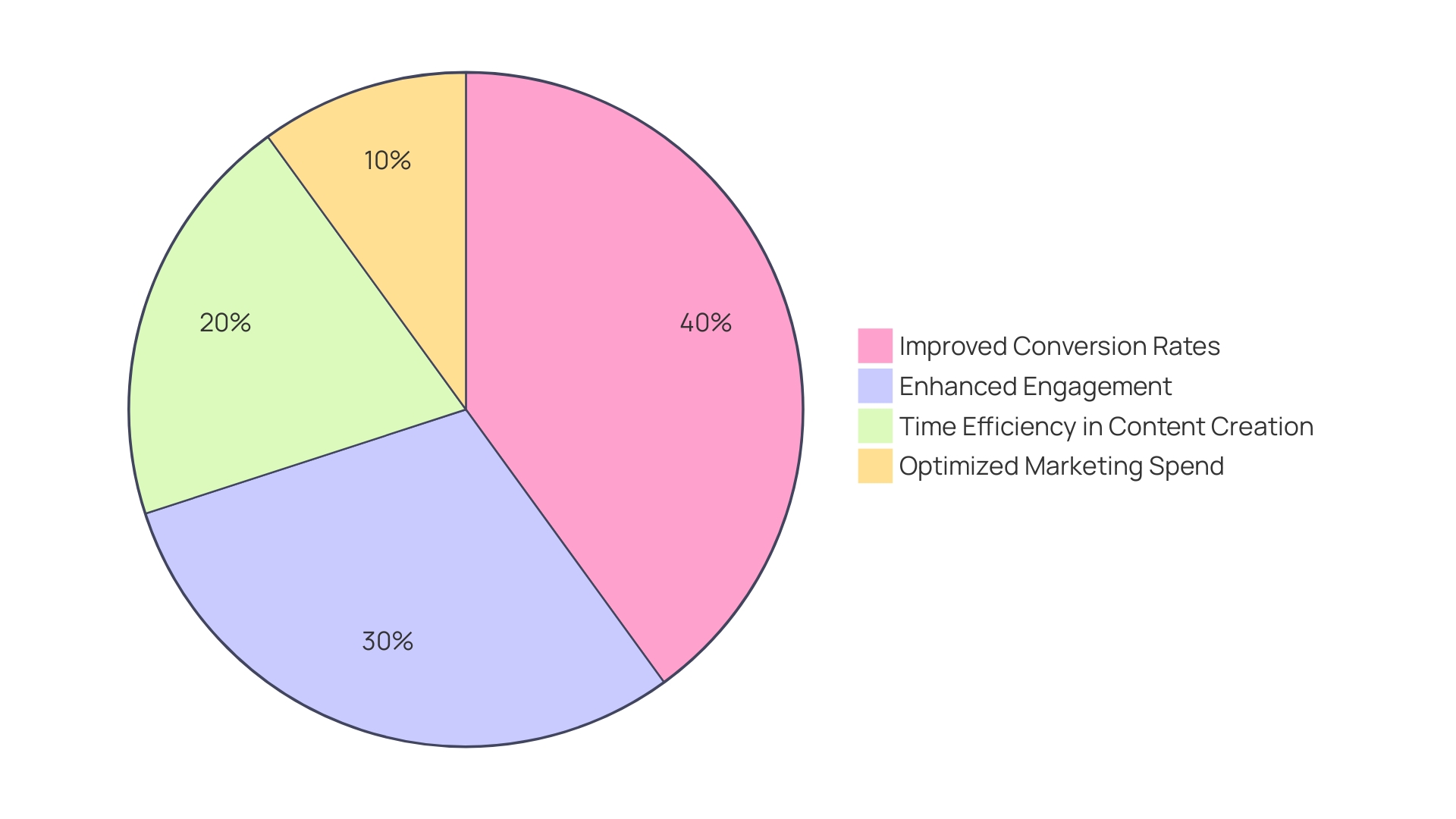
Benefits of Using a Call-to-Action Generator
Leveraging a Call-to-Action (CTA) Generator can significantly enhance marketing efforts, providing multiple key benefits. First and foremost, it streamlines the creation process by automating the design of engaging calls to action, allowing marketers to invest more time in strategic planning. This automation is essential given the intricate craft involved in writing effective calls to action, which blend both art and science to prompt readers to take the desired action.
Furthermore, a CTA Generator improves the efficiency of promotional campaigns through data-informed recommendations customized for particular demographic groups. As Jeff Bradford, a thought leader in marketing, emphasizes, understanding and leveraging data can create meaningful connections with your target group, making your calls to action more impactful. This ability to fine-tune calls to action based on audience behavior is crucial in today’s competitive landscape where personalized communication can significantly drive engagement.
Additionally, the inclusion of A/B testing features within these tools allows marketers to refine their approaches based on real-time performance data. This iterative process of testing and optimizing ensures that the calls to action are not only compelling but also yield the highest possible conversion rates. According to recent insights, businesses that systematically test and optimize their calls to action see a marked improvement in their overall conversion rates, directly impacting revenue growth.
Incorporating these features into marketing strategies offers a clear pathway to improving ROI. By automating the creation of calls to action, making data-informed adjustments, and continuously refining through A/B testing, marketers can achieve a more efficient and effective approach to driving customer actions.
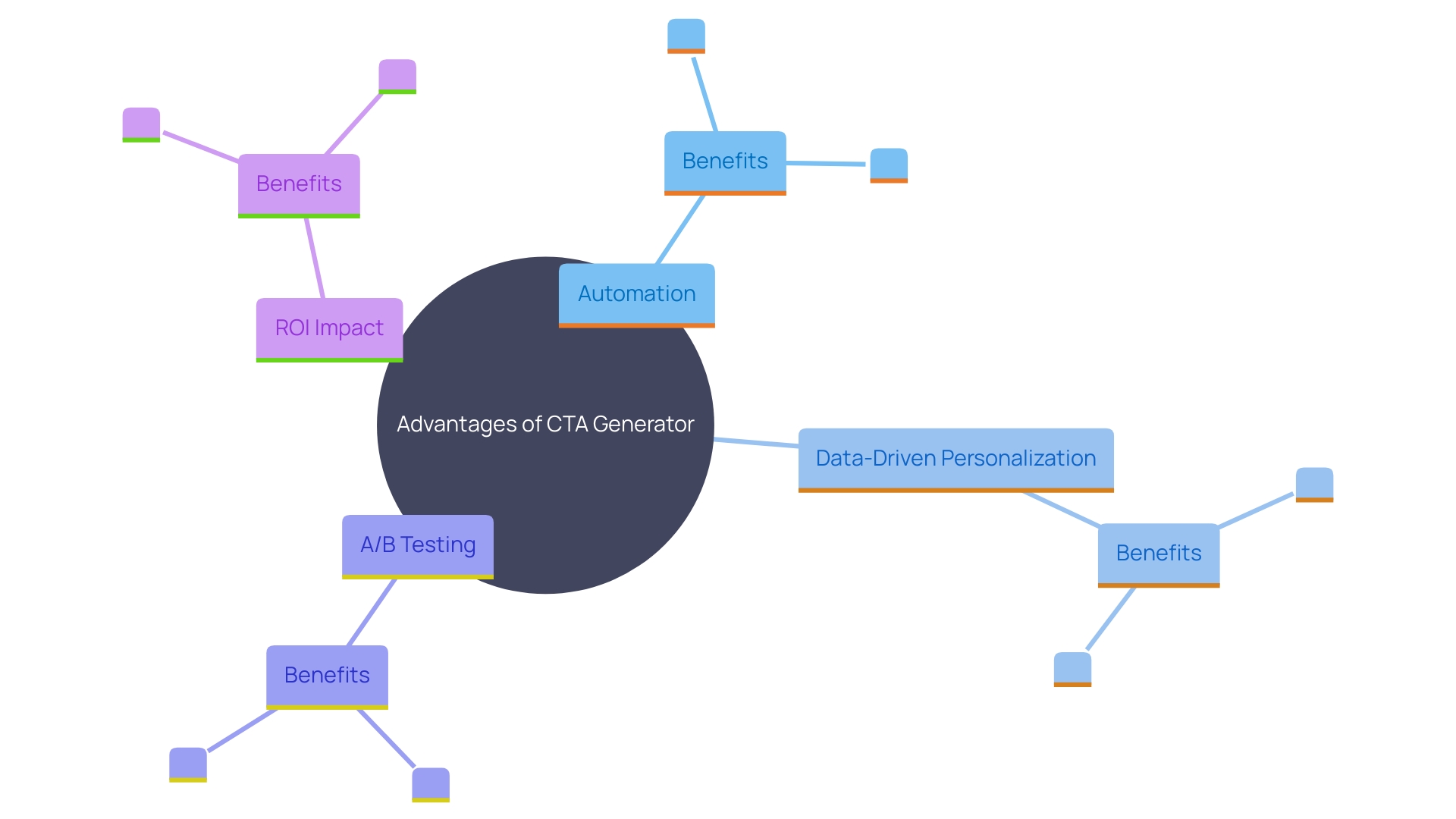
Key Features of Effective Call-to-Action Generators
Effective Call-to-Action (CTA) Generators come equipped with a suite of advanced features designed to enhance their usability and impact. Among these are customizable templates and intuitive drag-and-drop design interfaces, enabling marketers to craft compelling CTAs with ease. Integration capabilities with other promotional tools ensure a seamless workflow, allowing for a cohesive approach across multiple platforms.
Furthermore, these generators often include comprehensive analytics dashboards that provide real-time data on CTA performance, offering valuable insights into click-through rates and conversion metrics. ‘According to a survey of industry leaders, implementing AI in these tools has become both a top priority and a significant challenge, underscoring the importance of data-driven decision-making in today’s business landscape.’.
Jeff Bradford, a celebrated visionary in promotion, highlights the influence of narrative in establishing significant connections with listeners. This principle can be directly applied to CTA design, where authentic and engaging messages can significantly boost user interaction. Furthermore, David Apple, Chief Marketing Officer of Intuitive Health, emphasizes the significance of clear communication and authenticity, which are vital in creating calls to action that connect with target audiences.
Utilizing these advanced attributes and insights, marketers can refine their calls to action to increase engagement and conversion rates, ultimately improving their overall marketing effectiveness.
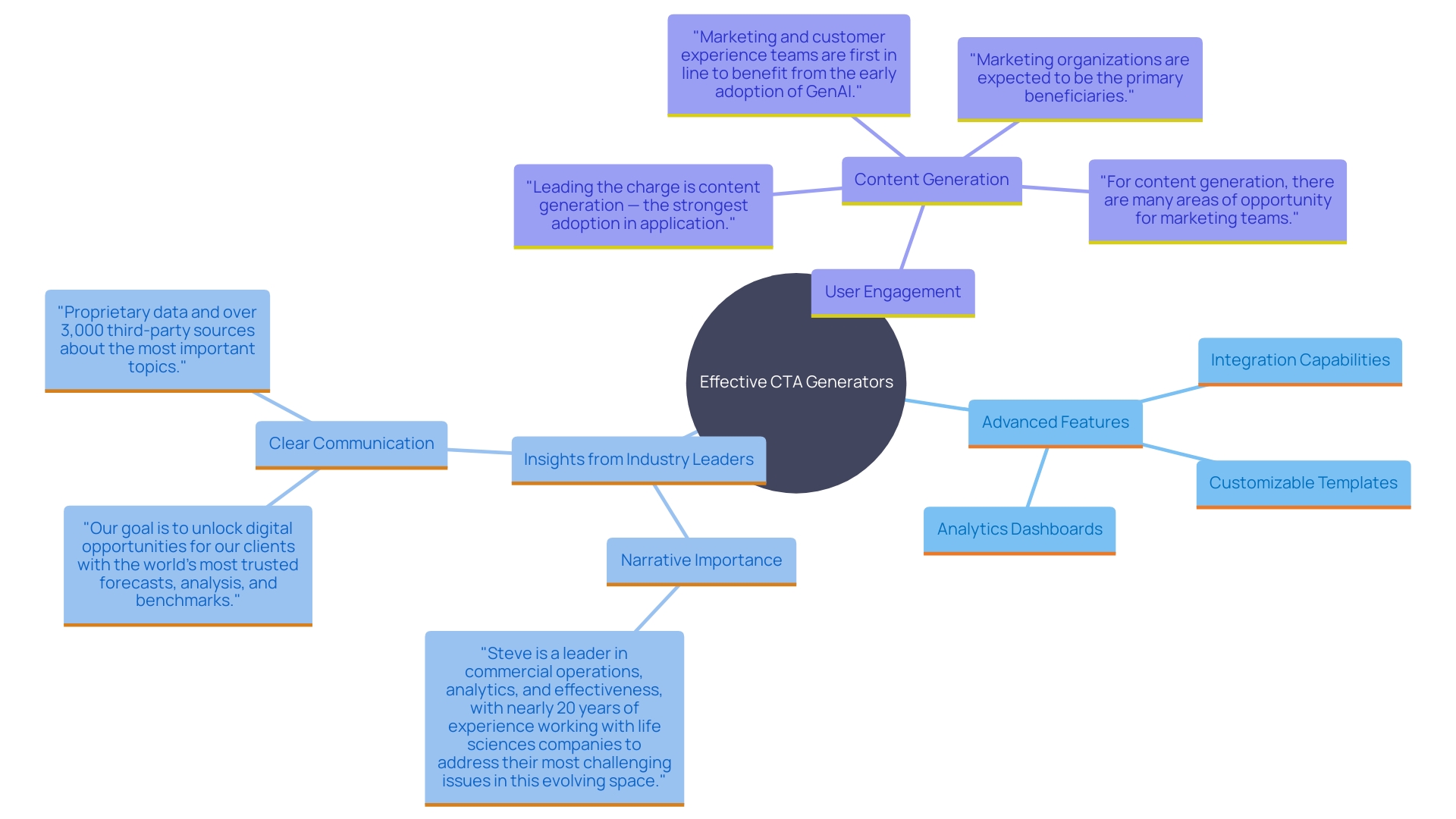
Common Mistakes to Avoid in Call-to-Action Creation
Marketers often encounter several pitfalls when designing effective calls to action. A common error is using unclear or uninspiring language, which fails to prompt user action. Ensuring that calls to action are mobile-optimized is essential, as a substantial number of users access content through mobile devices. Another common error is overloading calls to action with too much information, which can overwhelm potential customers and result in decision paralysis. As emphasized by industry specialists, comprehending your audience and customizing your calls to action accordingly can greatly enhance engagement. For instance, a well-crafted CTA that clearly explains who you are, what your product does, and its relevance to the content can be highly effective. This approach is not only explicit and transparent but also noninvasive, making it memorable for users who find the topic important. Steering clear of these typical errors is essential for improving the influence and efficiency of your calls to action.
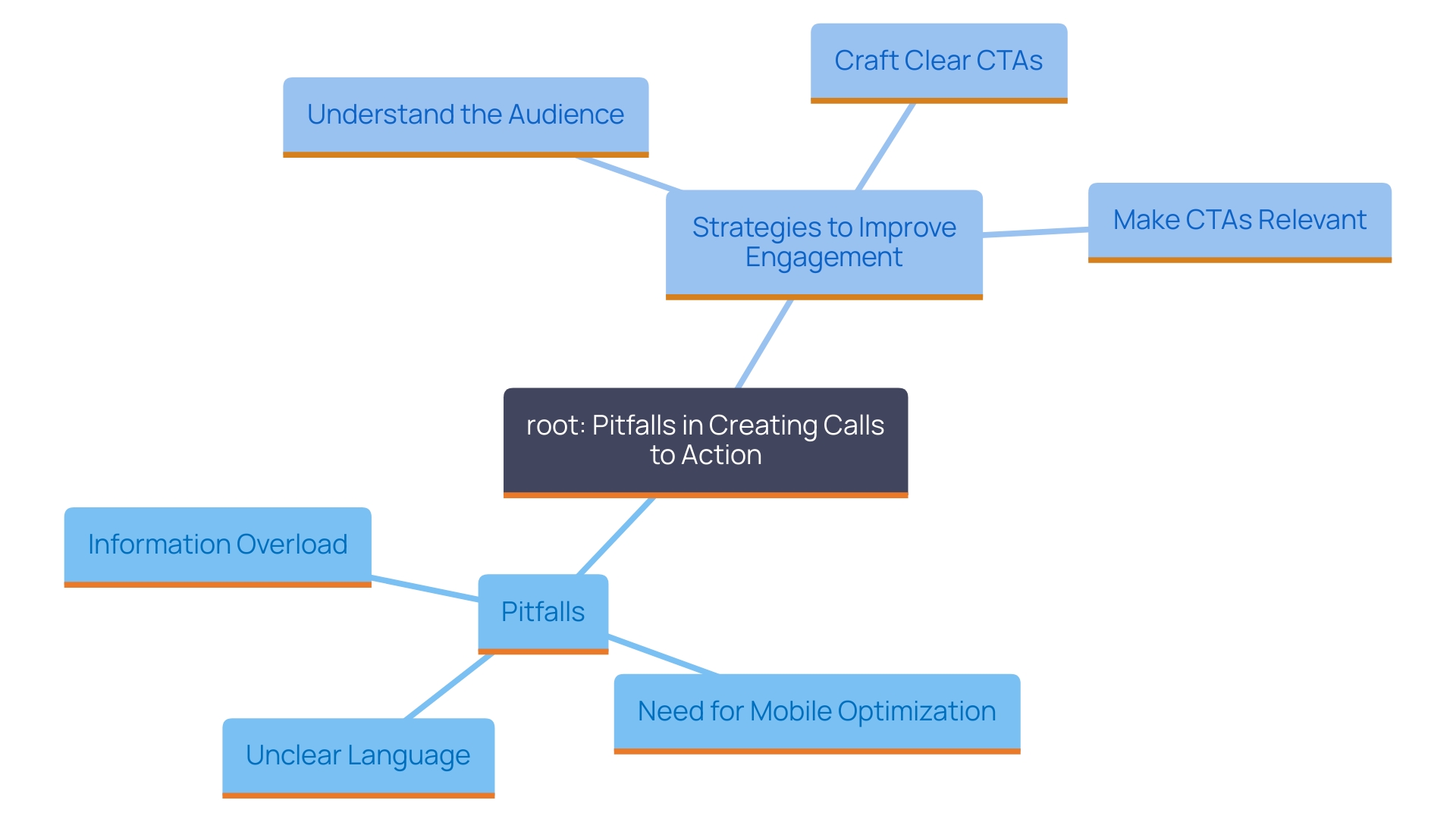
Best Practices for Call-to-Action Placement and Design
Effectively placing and designing calls to action is crucial for maximizing user engagement and driving desired actions. Positioning calls to action in high-visibility areas, such as above the fold or at the end of blog posts, ensures they catch the user’s eye. The design should be simple yet striking, employing contrasting colors to grab attention. Statistically, effective calls to action can significantly boost conversion rates, as highlighted by various industry experts. For instance, the use of clear, action-oriented wording that conveys urgency can prompt immediate responses from users. This approach aligns with the EASY framework‘s principle of making content Expert, Actionable, Simple, and Yours, as emphasized by content marketing professionals.

Measuring the Success of Calls to Action
To assess the effectiveness of calls to action, marketers should implement robust measurement strategies to track performance metrics. Key indicators to monitor include click-through rates, conversion rates, and user engagement levels. According to Amplitude’s industry benchmarks, these metrics are crucial in understanding digital behavior and optimizing campaigns. Employing A/B testing can further offer insights into which calls to action resonate best with the group. Jeff Smith, a seasoned expert in promotion, emphasizes that “the purpose of these pages (and forms) is to get your audience to take a specific action… Without these clicks, you can’t generate revenue.” By continually analyzing these metrics, marketers can refine their strategies, ensuring their CTAs drive the desired outcomes. Real-world case studies have shown that data-driven strategies empower more effective resource allocation and marketing efforts, bridging the gap between data science and business decision-making. This approach not only enhances operational efficiencies but also positions companies to thrive in a competitive landscape.
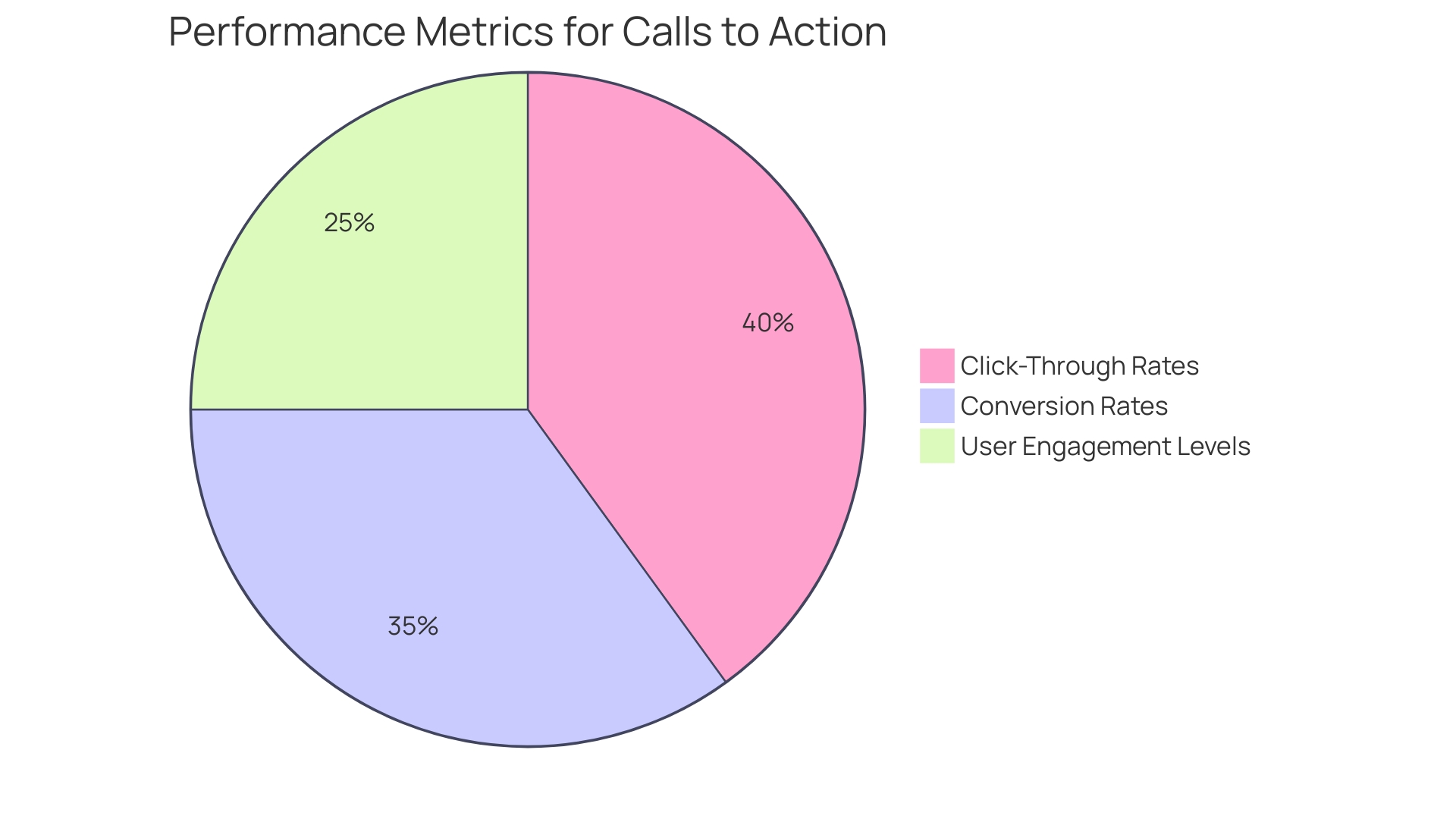
Conclusion
The integration of Call-to-Action (CTA) Generators into marketing strategies presents a transformative opportunity for businesses seeking to enhance engagement and drive conversions. By leveraging advanced algorithms and customizable templates, these tools simplify the creation of compelling CTAs that resonate with target audiences and align with business objectives. In sectors like healthcare, where precise communication is vital, CTA generators facilitate timely and effective messaging, ensuring that marketing efforts are both consistent and persuasive.
Utilizing a CTA Generator not only streamlines the creation process but also allows for data-driven adjustments that cater to specific audience segments. This personalized approach enhances the impact of marketing campaigns, leading to improved engagement and conversion rates. The inclusion of A/B testing features further empowers marketers to refine their strategies based on real-time performance data, maximizing return on investment and driving revenue growth.
However, it is essential to avoid common pitfalls in CTA creation, such as unclear language or cluttered designs. Best practices for placement and design, including strategic positioning and eye-catching aesthetics, can significantly boost user interaction. By measuring the success of CTAs through key performance metrics, marketers can continuously optimize their efforts, ensuring that every message prompts the desired action.
Incorporating CTA generators into the marketing toolkit not only simplifies the campaign creation process but also enhances operational efficiency. By adopting these innovative tools and strategies, businesses can effectively navigate the complexities of modern marketing, achieving sustainable growth and stronger connections with their audiences.

